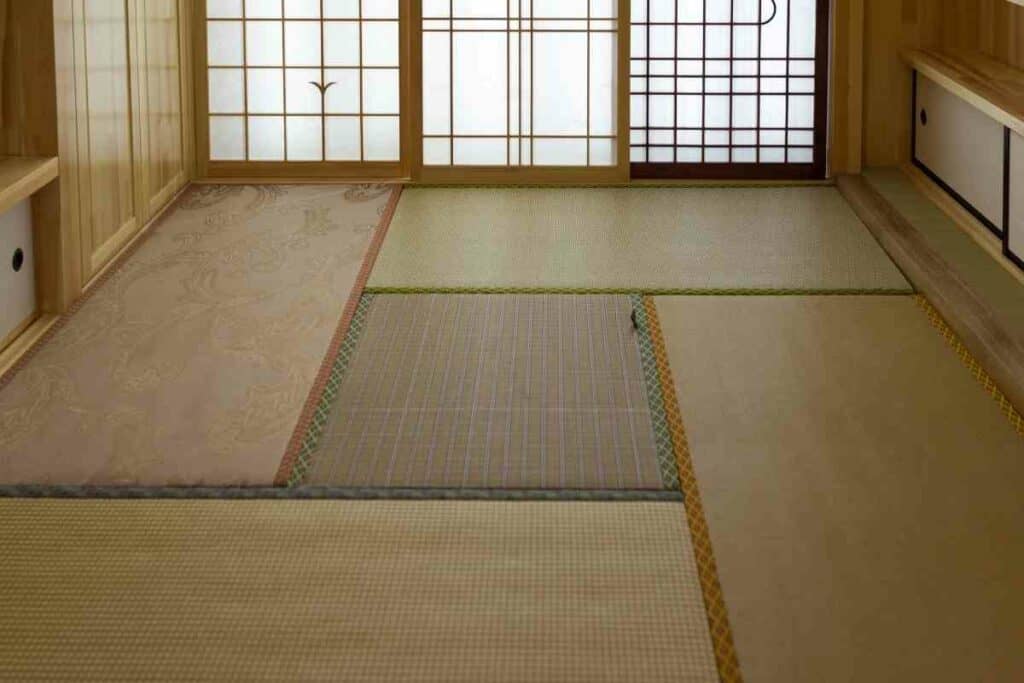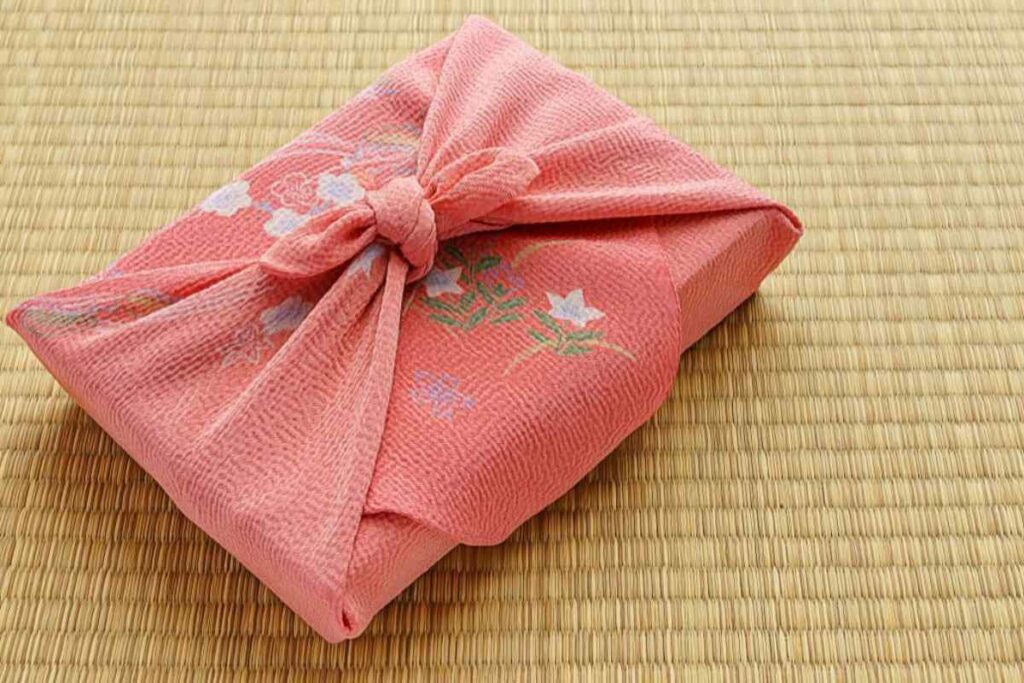Tatami mats are traditional Japanese flooring solutions.
Tatami is a verb in Japanese that means to fold, derived from the word tatamu.

The earliest traditional tatami mats were thin and easy to fold up. Tatami mats are woven from rice straw and are used to cover floors.
Throughout History – Conventional Japanese homes have wooden floors and the wealthy preferred using tatami mats for seating and sleeping.
[lasso ref=”amzn-fuli-japanese-tatami-mattress-igusa-mat-100-japanese-rush-grass-folds-in-three-made-in-japan-natural-full” id=”27568″ link_id=”6417″]
Table of Contents
How Are Tatami Mats Made?
The structure of a tatami mat is basic.
The base, known as doko, is made from tightly packed together rice straw.
The cover, known as omote, uses a soft rush straw called igusa. The cozy cover makes the mats plush and comfortable for daily use.
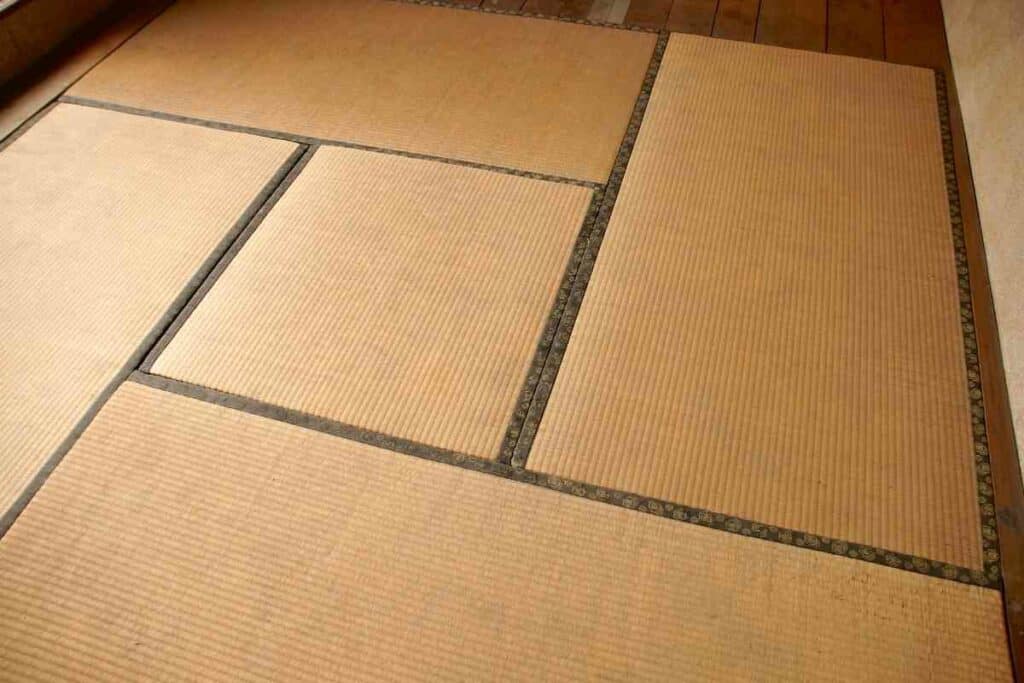
Borders or edges in these rectangle-shaped mats are known as heri.
The Japanese initially made the edges from hemp or cotton, but newer tatami mats have synthetic fiber edges.
Most tatami mats are woven by machine, although some Japanese manufacturers still make them by hand.
Booking.comHow to Use Tatami Mats in Japanese Style Rooms
If you visit a Japanese home, meditation/yoga center, office, or tea room today, you will encounter many tatami mat styles and sizes.
Their soft, delicate feel and distinctive woodlike smell make them desirable to date when walking, seating, or sleeping.
Modern Japanese homes and apartments have tatami mats in one or all their rooms.
Some people stack them up as a seat, place them between western-style beds to step on, or place a futon on top as a sleeping area.
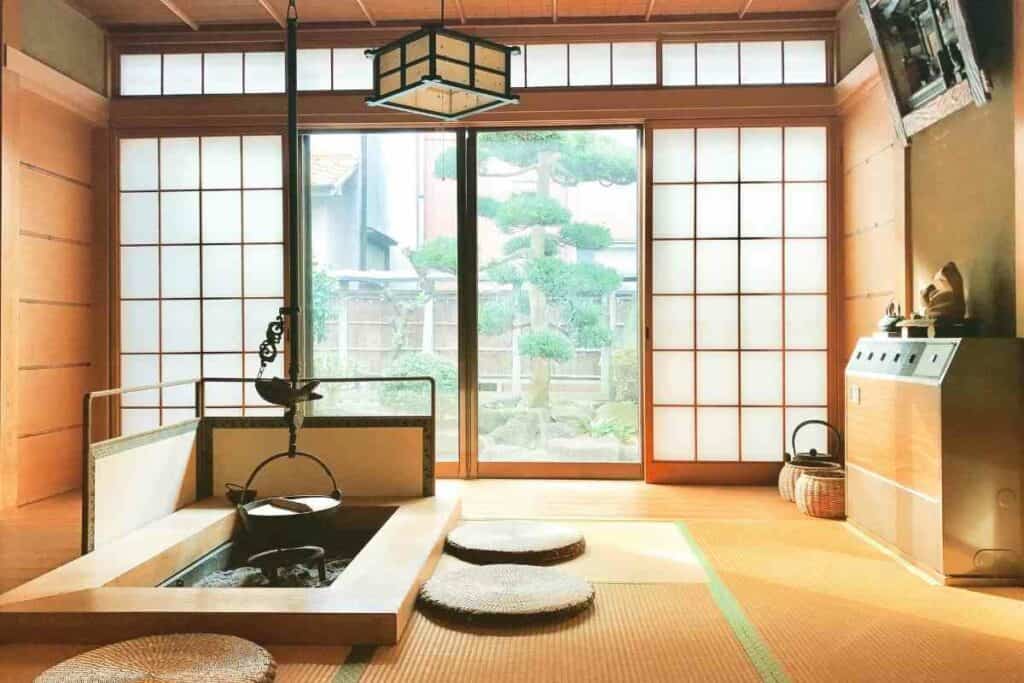
Tatami mats come in different sizes and styles. Their sizes range between 2 feet wide to 7 feet long.
A room can fit several smaller sizes as desired. Laying them out in a room requires one to follow the Japanese’s particular layout.
The arrangement differs from a permanently set-out room depending on the occasion.
Good to Know: Proper tatami mats laid floors ensure no four corners touch to bring good fortune. The Japanese believe that an exact grid pattern brings bad luck and is used only during mourning.
Do You Sleep Directly on Tatami Mats?
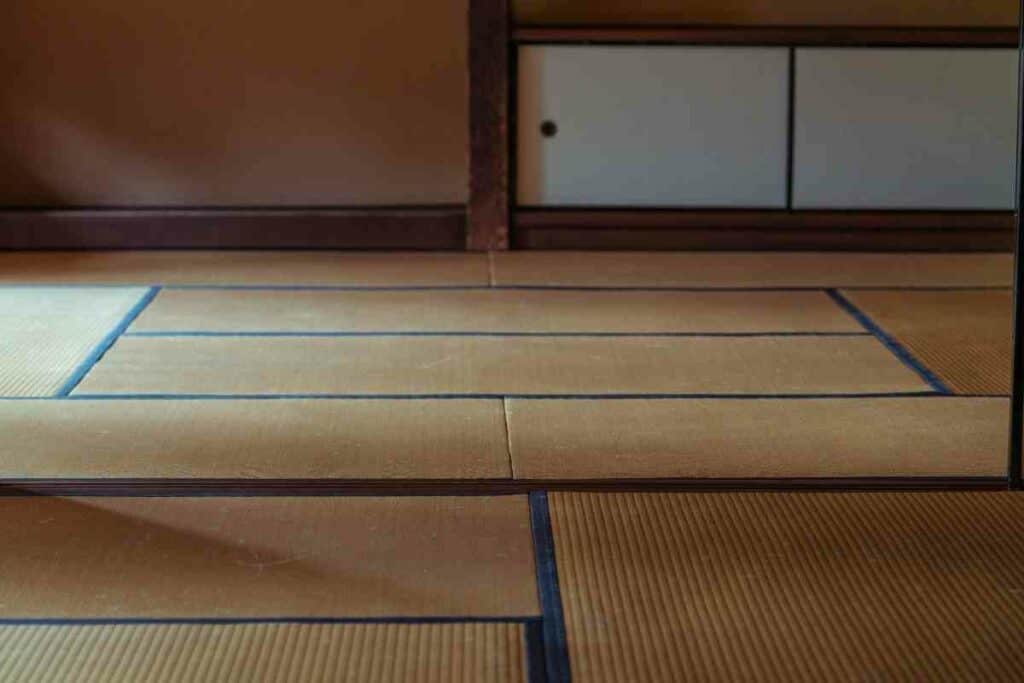
Modern Tatami mats are soft and comfortable enough to sleep on without placing a futon or mattress as is common practice.
Rooms in Japanese style are known as a washitsu.
If you are interested in experiencing Tatami mats flooring, visit a traditional Japanese Inn popularly called ryokans and enjoy the warmth and tranquility of living and sleeping on tatami mats.
Alternatively, you can purchase a tatami mat in any oriental store near you that stocks them.
The Advantages Of Tatami Mats
Tatami mats are not only lushly comfortable to step and sleep on but have several other benefits, as shared below.
1 – Temperature Control
Cool air tends to settle at the bottom of a room.
Sleeping on the floor on a tatami mat allows one to get a fantastic night’s sleep, especially during hot summer nights.
2 – Discourages Back and Muscle Pain
Resting on a Tatami mat will be good for your back and helps relieve minor muscle aches caused by sleeping on lumpy mattresses.
3 – Improves Body Posture
Lying down on your back flat on a tatami mat promotes good spinal positioning.
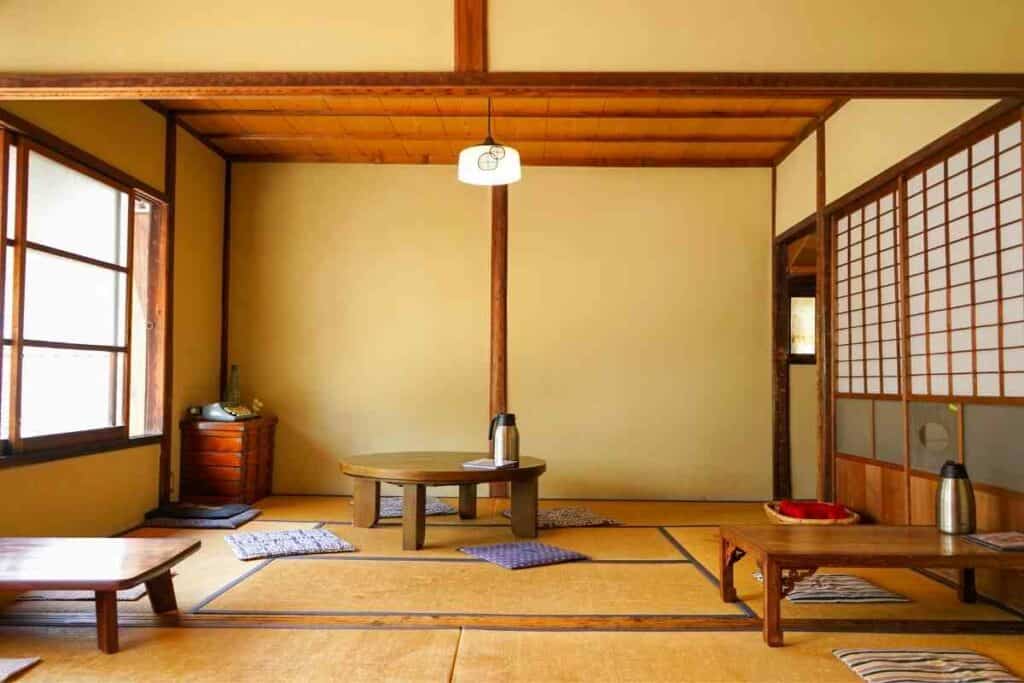
Your spine will remain in a normal position when you avoid stress on its ligaments, reducing the risk of other health problems.
4 – Promotes an Eco-friendly Environment
The weaving of tatami mats uses rice straw which is chemical-free and eco-friendly.
Modern furniture manufacturing uses trees, which take a long time to grow, whereas rice straw grows in a season.
5 – Creates More Room
Furniture and especially western-style beds are bulky and take up a lot of space in a room.
Placing a futon on a tatami mat does not occupy much space, making the room feel and look roomier.
Tatami mats can also be easily folded up and put away when not used.
6 – Improves Circulation
Sleeping on a Tatami mat improves your body’s blood circulation as your body weight has equal distribution.
Your heart, lungs, and muscles will function better for people without circulation problems.
7 – Saves Money
Modern furniture is rather expensive. People interested in buying Tatami mats will find an affordable alternative.
Tatami Mats Available Online
How to Take Care of Tatami Mats
Tatami mats are good to use all year round. They work in hot, humid or cold, and dry seasons.
Cleaning Tatami mats can be a bit tricky, but here are some tips:
- Vacuum the mats regularly to remove dirt and dust. Use a soft brush attachment to avoid damaging the surface of the mat.
- If there are any stains on the mat, use a damp cloth to gently wipe them away. Avoid using too much water, as this can damage the mat.
- For tougher stains, use a mixture of water and vinegar or a mild detergent. Apply the solution to the stain and blot gently with a clean cloth. Rinse the area with clean water and allow it to air dry.
- To prevent mold and mildew, make sure the mats are kept in a well-ventilated area and avoid exposing them to moisture.
- If the mats become musty or develop an odor, sprinkle baking soda over the surface and let it sit for a few hours before vacuuming it up.
Key Takeaway: Moisture is harmful to tatami mats as it encourages mold growth and ages the carpet faster. Ensure the room has good ventilation to air the rugs regularly.
How long do Tatami Mats last?
How do you store Tatami Mats?
How do you repair damaged Tatami Mats?
Repair kits are available on Amazon Here
Are Tatami Mats comfortable to sit on?
How Long Do Tatami Mats Smell?
A new tatami mat has a strong grass smell that most people find unpleasant.
However, the smell goes away after a while.
Turn over your green mats every few weeks and ensure your tatami room gets fresh air every day.
Conclusion and final thoughts
Tatami mats are an essential and noble part of Japanese culture.
The widespread use in all their establishments is a testament to their comfort and proven health benefits available for everyone, not only to the noble as it was in the past.
You May Also Read
- 7 Best Japanese Sunscreen Products You Can Buy Online
- 5 Best Japanese Makeup Brushes for a Flawless Finish
- 7 Benefits Of Tatami Mats You Should Know
- The Best Furoshiki Wrapping Cloths: Inspiration, Ideas & Cloths You Can Buy
- Cool Tenugui Towels (10 Best Ones with Bold Japanese designs)
- Japanese Yukata Ideas & Inspiration (20 Creative Ideas)



